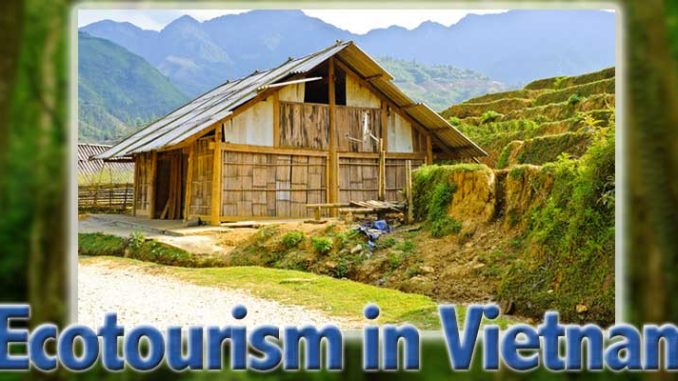
With 13,000 floral species and over 15,000 faunal species, three newly discovered big animal species, and a ratio of country/world species of 6.3%, Vietnam is one of sixteen countries with the highest biodiversity in the world. Its wide range of ecosystems and shift to an open economy make it a very favorable site for ecotourism development. Indeed, tourism has been identified by the government as a spearhead economic industry and there has been a seven-fold increase in international tourist visits to Vietnam in the last decade. Ecotourists account for over 30% of international and nearly 50% of domestic tourists. Ecotourism is distinguished from mass or resort tourism by its lower impact on the environment, lower infrastructure requirements, and educational role regarding natural environments and cultural values.
Potential target areas for ecotourism include coastal ecosystems (sea-grass, coral reef, lagoon, sandy beach, and mangrove habitats), limestone mountains, national parks and nature reserves, and fruit gardens. Most of these are not only interesting landscapes, but home to Vietnam’s rich cultural identity. Ethnic minorities—resident in most potential ecotourist sites—have a deep understanding of traditional festivals, land use customs, culinary culture, traditional lifestyle and handicrafts, and historical places.
Despite such great potential, this paper identifies several areas in which so-called ecotourism in Vietnam falls short of the ideal. There has been investment in nature reserves by the state and in hotels and restaurants by foreign investors, but not the kind of investment in human resources needed by tourist guides and staff, especially training in environmental knowledge. Tourism is still largely spontaneous and unregulated, resulting in environmental degradation. Local populations, their cultural identities, and traditional customs are not much involved in ecotourism, nor are they reaping its economic benefits. Finally, tourism management and policy are fragmented among various levels of government, resulting in a lack of national strategy.
The paper recommends: coordination among concerned bodies to develop ecotourism while conserving vulnerable ecosystems and defending cultural integrity; environmental impact assessments and research on carrying capacities; compulsory human resource training for ecotourism staff; and the engagement of local communities, not only in income-generating activities but also in conservation work.
Phan Nguyen Hong, Quan Thi Quynh Dao, Le Kim Thoa
Phan Nguyen Hong, Quan Thi Quynh Dao and Le Kim Thoa work at the Mangrove Ecosystem Research Division, Centre for Natural Resources and Environmental Studies, Vietnam National University, Hanoi. The case study presented in this paper is an initial finding from the project funded by the MAB/UNESCO within the Young MAB Scientist Award Programme 2002, and was undertaken with Le Kim Thoa. The author would like to express great gratitude to MAB/UNESCO for this support.
Read the full unabridged article HERE
Kyoto Review of Southeast Asia. Issue 2 (October 2002). Disaster and Rehabilitation

